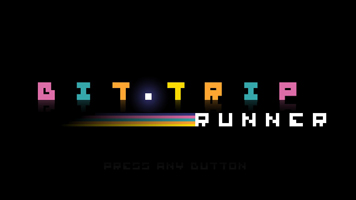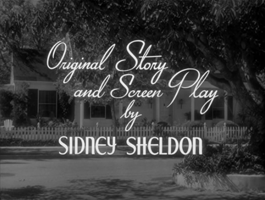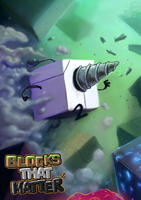

developed by Gaijin Games (Santa Cruz, CA)
first published by Aksys Games, May 14, 2010, for Wii, 800 Wii Points (=$8)
PC version published by Gaijin Games, February 28, 2011, for Windows/Mac, $9.99
[trailer]
[original website, current website]
~60MB
Played up to level 3-2 (i.e. level 26 of 36) in 5 hours, 3/24/15–3/29/15.
[2-hour video of a guy talking his way through a complete “perfect run”]
Fourth of the seven games in “Humble Indie Bundle 4″ purchased on Tuesday, December 13, 2011.
I don’t entirely hate this game. But it is very irksome.
You’ve heard me complain repeatedly about nostalgia-as-design — or, actually, you’ve heard me make explanation after explanation about how I disapprove of nostalgia on principle but such and such game, despite seeming like a nostalgist offender, actually isn’t for some subtle reason. Well, folks, this one is. This is offensive.
Bit.Trip Runner (and, it would seem, the other six “Bit.Trip” games, but I haven’t played any of those) is full-bore phony “retro.” It’s all affectation, affectation clambering over affectation to make a giant pyramid of affectation. Remember the 80s? Remember Atari? Remember pixels? Remember rainbows? Remember simple? Remember mom and dad? Remember second grade? Remember “awesome?” Remember you?
The game is hipster hooey. The developers are so aggressively convinced that they can tap into something great with their sweet sweet precious memories that they just barely have room to think about anything else. The game itself is a stunted little thing. “Sure, sure, it’s deliberate, a sentimental homage to the days when every game was a stunted little thing but we were devoted to them anyway! Atari 2600, baby! Betamax! Shag carpet and Hi-C! The best, the best, the best!” Argh. Screw you.
After every level, if you earn it, a message pops up saying “BONUS GET!” and there’s a bonus stage meant to look like Pitfall! (1982), done in a totally condescending and reductive way, with a fake “bad video signal” overlay on the graphics. Also, over the course of each level, the protagonist (“Commander Video”) gradually acquires a rainbow trail like the one seen on the cover of Pitfall! and other Activision games of that era. “Commander Video” is drawn to look sort of like the ninja from the Commodore 64 Bruce Lee game, an allusion that becomes explicit when he goes into his flat-on-his-back posture.
I originally wrote the paragraph above with “Screw you” inserted after each item.
The look of the game is an ugly mishmosh of “pixel-inspired” bullshit — note: not pixel art. The game is not a low-resolution game with a fixed pixel grid; it is a high-resolution modern game running in 3D engine where the objects are all… “you know, blocky and awesome.” They aren’t blocky to the same resolution or even in the same style as one another. They’re just various things that variously fit the description “blocky.” It’s as though someone with a kind of fuzzy memory of pixel graphics described them to an artist who’d never seen them, and missed some of the essentials. That is to say, Bit.Trip Runner is to Atari graphics as a medieval European drawing of an elephant is to an elephant.
“Sure, sure, it’s deliberate, it’s a crazy homage to, uh…”
Meanwhile, it’s worth pointing out that because of the lack of anti-aliasing on the ugly blocky 3D objects, it’s entirely possible to see the actual pixels that make up this game’s graphics. We still have them, you know! They’ve just gotten somewhat smaller than they used to be. To me this a perfect metaphor for the philosophical ailment that seems to be everywhere: the game obsesses self-consciously over being “pixelly goodness to the max” so much that it doesn’t pay good attention to the ways in which it is actually made of real live pixels. It’s the grotesquely clueless reification of an abstraction that ultimately usurps the thing itself. (You can say that again!)
(By the way, I want to note here that in all my childhood, I only once was able to get to the point in Bruce Lee seen at 8:04 in the video above, and never further.)
The game is sort of a “platformer,” but one that’s been grated down to the rind, so that you might be tempted to call it a “rhythm game” instead. Basically, the dude runs at a fixed rate from left to right but never moves across the screen; the scenery with its obstacles just slides past him to the left, like a piano roll that he has to play (cf. rhythm games like Dance Dance Revolution and Guitar Hero). The piano roll consists of obstacles that he has to either jump over, spring off of, slide under, kick open, or block with a shield: five different buttons to press, exactly at the right time, when necessitated by the scenery. That’s it! You screw up, you start again. This is all synced to the music so that every successful jump and slide and kick makes a little “boop” that matches the harmony.
I said you might be tempted to call it a rhythm game. If you watched someone else play it, you’d be tempted, because it would seem like playing the game was a kind of satisfying dance to the beat. But that’s an illusion. The music is actually a big red herring. The design is such that the little guy’s jump will take him flying over an obstacle on the beat, which means that the button that makes him launch into the jump had to be pressed some perfect fraction of a second earlier. Do you understand the implication? This is a game where everything happens in a musical rhythm except for the thing that you have to time exactly. Instead of the experience being one of the player’s thumbs dancing to the beat, it’s one of the player stressing out about pulling the strings just before the beat so that Commander Video gets to dance to the beat. The music doesn’t show you the way or help you out; it presses upon you as you rush to anticipate it. It impends.
It’s actually an anti-rhythm game, which is basically the purest form of anxiety: YOU had better stay off of the rhythm, ahead of it, so that everyone else — Commander Video and all the moving mine carts and fish and buildings onscreen — can have a happy dance party and sync up like a joyful Silly Symphony world. YOU are not invited to the party: you have to cater the party like a servant. For god’s sake, use your stoic professionalism to block out the urge to dance; it’s not your place, as you’ll quickly see. And if you drop anything, a slap in the face for you! You ruined it for everyone, you dolt! Now thanks to you, we all have to start again!
If staying in the game’s groove were rewarded and falling out were punished, that could be gratifying; or if you had to establish your own groove for the game to follow. But this is a game where you’re obligated to resist the game’s groove on its behalf, but failing to service it is punished. It’s really very demeaning.
The music also offends as music. The callow use of magical sentimental nostalgic sounds always makes me feel like the pleasure of those sounds is being stolen out from under me. Goddamn it, this might have been something I could have enjoyed if only it weren’t so completely contrived, disingenuous. I used to feel exactly these harmonies, get something out of them, but I can’t because you’re so clearly trying to milk them for, ahem, “all the feels.”
The whole game feels like a nightmare where you want to go home but instead you find that there’s a costume ball going on, where self-serving strangers have dressed up like your family, and they’re really into how great and “authentic” and “old school” they’re being. “Woo-hoo, feel all the feels, dude! Home is where the heart is!” Goddamn it.
(For what it’s worth, I just made that up; that’s not a nightmare that I’ve actually had. Not while I’m asleep anyway.)
This is what people mean when they complain about their favorite band getting too popular, or “selling out,” and why hipsters are so quick-tempered about such things: it’s the sense that other people are being more anxious and self-regarding than they are sincere. Each hipster is hyper-aware of this in others because he/she is lonely and desperate to find someone who isn’t so thoroughly guarded and constructed, with whom connection is possible… but of course from the inside, it feels different. To the person who’s doing it, self-branding feels like a necessary bulwark against the floodwaters of shame. To everyone around them, it looks like a weapon of intimidation or an antisocial suit of armor.
Slogan for the world: Defensiveness and aggression are the same thing! All your enemy’s hostility feels to them like defense. All your defenses appear to others as hostility!
I said of Wes Anderson that I want to choose to focus on what’s delightful about his work and not on the vein of self-regard that tends to draw my anxious attention like a magnet. And I would love to be able to do that for everything, including this music, and including this game. But under the circumstances, I can’t. The circumstances being while playing this game.
It’s really remarkable just how bad playing this game makes me feel.
The essential task here is to reduce the impact of frustration on the body. Each time you screw up and are instantly zipped back to the start of the level to try again — levels which can be several minutes long! — your zen challenge is to find it in yourself to proceed as though for the first time, with full and optimistic attention, and not let the fact that you’ve just been slapped in the face affect your level of strain. This is very, very difficult! I remember noting this at a very early age while playing computer games: that despite acquiring experience as I practiced a difficult challenge over and over, I would in fact perform worse and worse; the first run in a given sitting was almost always the best. This was because I became more and more devoted to an insistent kind of hope, that this time would be the triumphant final time — okay, well, then this time… and this increasingly intricate and superstitious “hope” would start to fill up my brain and blot out the part of me that had any skills at all. I knew this then, but I didn’t know how to stop it; anything I did seemed to make it worse.
What I didn’t know, but know now, is that this so-called “hope” is really just a way of trying to suppress shame, and what it actually does is prevent the shame from being processed. It would cause it to accumulate and accumulate as I failed and failed, until I was completely incapacitated and would have to stop, in a confused state of high agitation.
So now I recognize that difficult video games, being as they are completely inconsequential to anything else in life, are a great opportunity to practice experiencing this shame and learning how to let it run its course and leave my body. Unfortunately this is still very hard because games are designed to trigger this shame. It’s not just frustration that I happen to experience alone; it’s pre-programmed frustration being intentionally delivered upon me.
Last week, the free iPhone app in the iTunes store was 8-Bit Doves (trailer), a very nicely produced game meant to be simple but bracingly frustrating (in the vein of the infamous Flappy Bird). I found myself enjoying it and enjoying that I was now able to let the frustration flow through me and out, rather than clogging me up… and yet that sound they put in when you crash, that harsh chomp sound, sent a little electric jolt through me every single time. I played and played waiting to become inured to it, but I never did. “Well,” I thought, “they did design it that way, after all. This is how it’s meant to affect me.”
I guess I don’t know for sure if that’s true, but it seems like it is. And so that’s how I feel about Bit.Trip Runner. It felt demeaning and infuriating, and I did my best to become like a stream of clear water, but it sure seemed like it genuinely didn’t want me to.
Maybe that’s all in my head. I have to keep experimenting, practicing. But probably with different games.
I declared myself done after spending an hour unsuccessfully trying to get through the outrageously long level 1-11. But then a few days later it occurred to me that I might get closer to enjoying the game if I muted the sound and did something else with my mind. Sure enough, while listening to conversational podcasts and playing the game passively, I was able to make a great deal of progress. It’s not that being distracted by podcasts made me a more accurate player — if anything probably the reverse — it’s just that being distracted by podcasts limited my capacity to hold on to frustration, which meant the level of my performance didn’t fall off over time. After two hours of listening to people talk about poetry and politics and other stuff, I found that I had gotten through the first two thirds of the game. Important principle: not attending to things gives one unlimited endurance!
Probably if I played for a few more hours, I could get to the end. But there’s really nothing there to see — I confirmed as much by watching the end on YouTube. And for the moment I’m out of podcasts. So we’re done here.
The credits:
Alex Neuse: designer
Chris Osborn: engineer
Mike Roush: artist
Danny Johnson: PC/OSX/Linux design
Petrified Productions [Matthew Harwood]: music & sound design
















